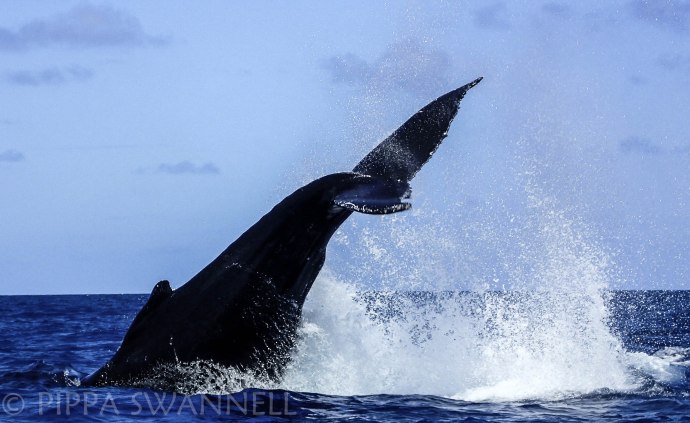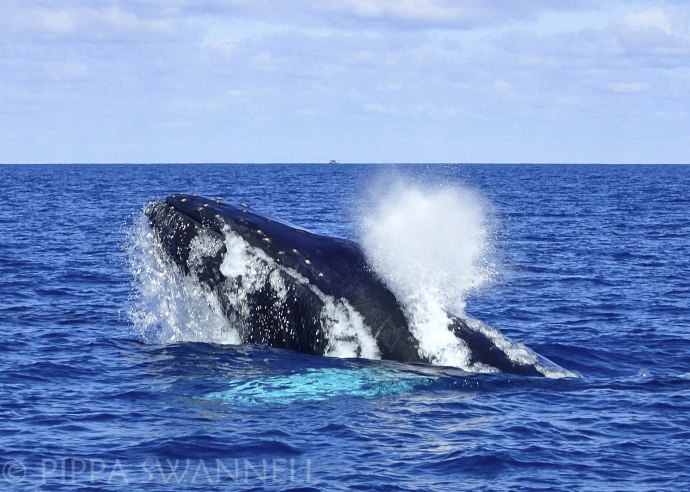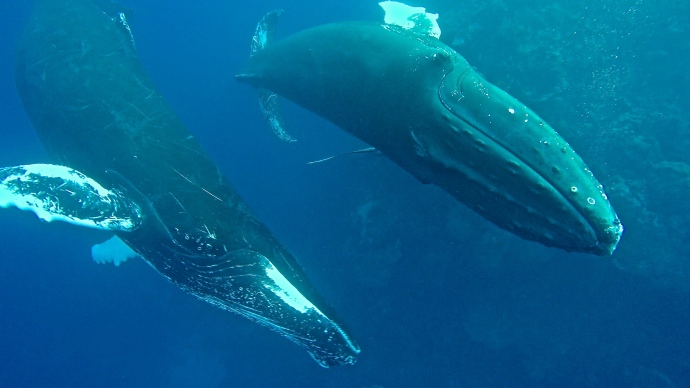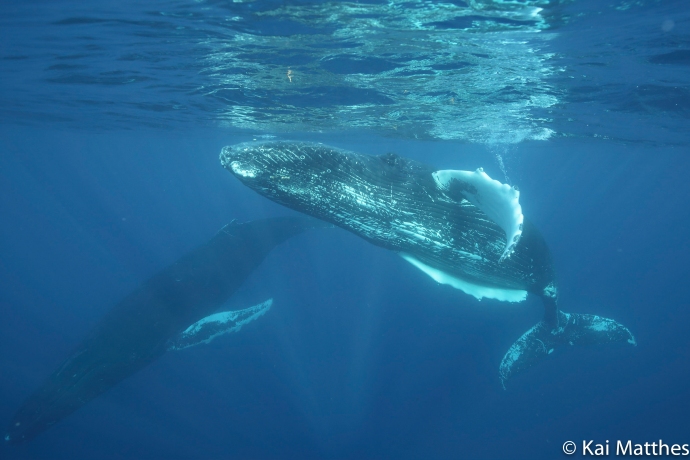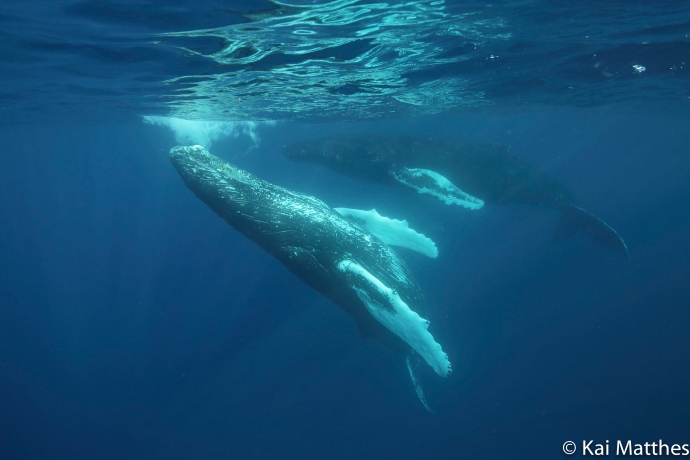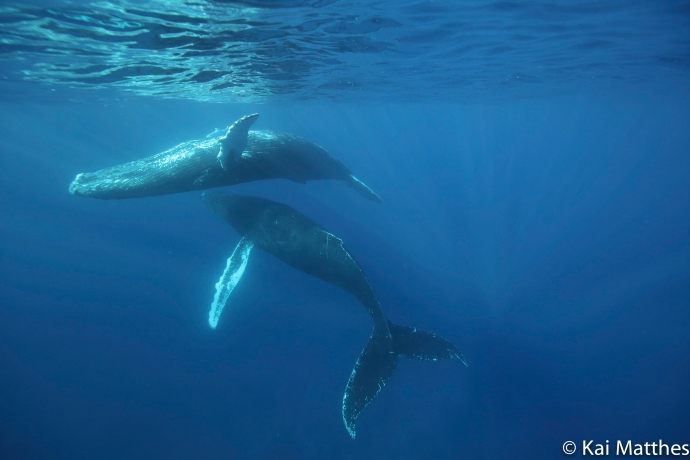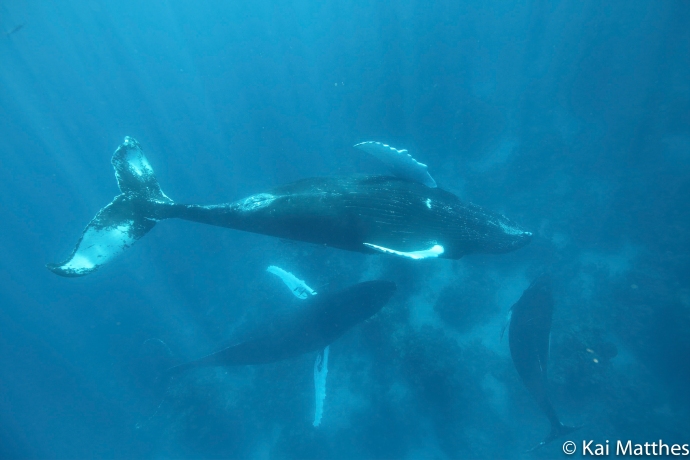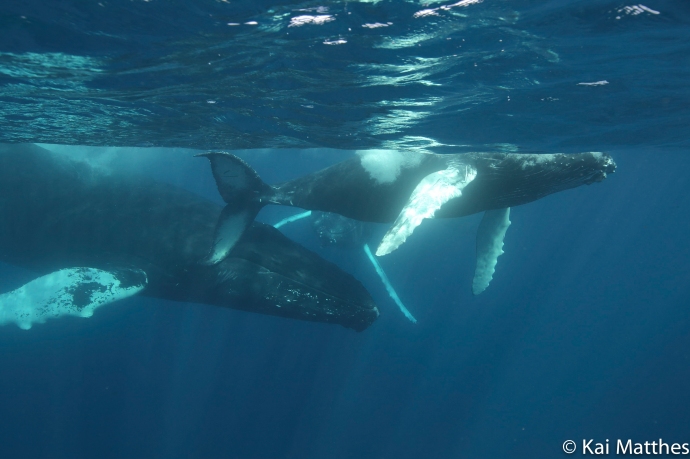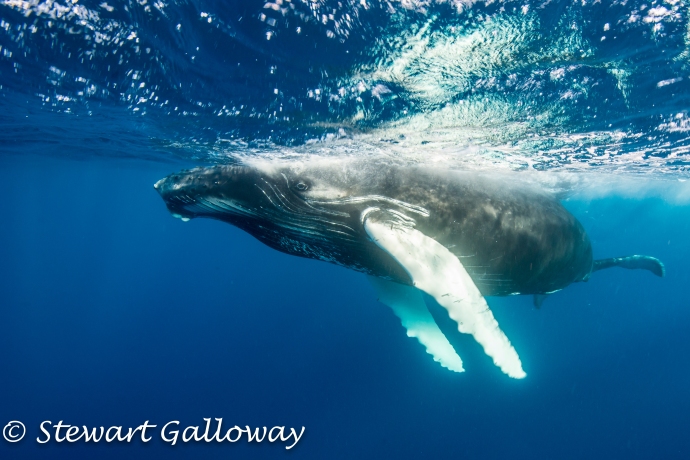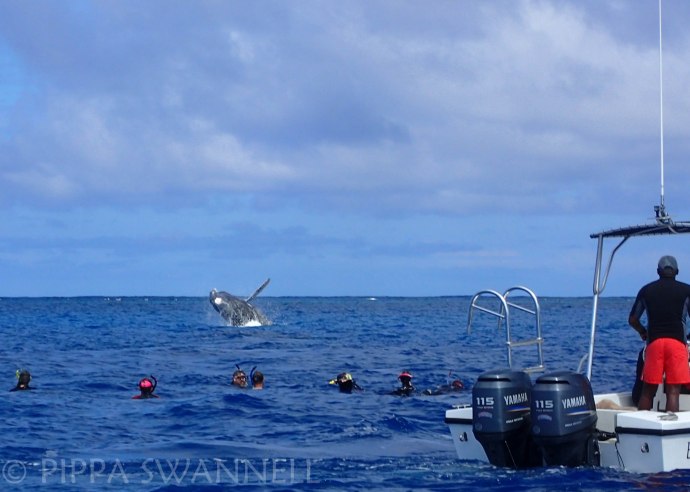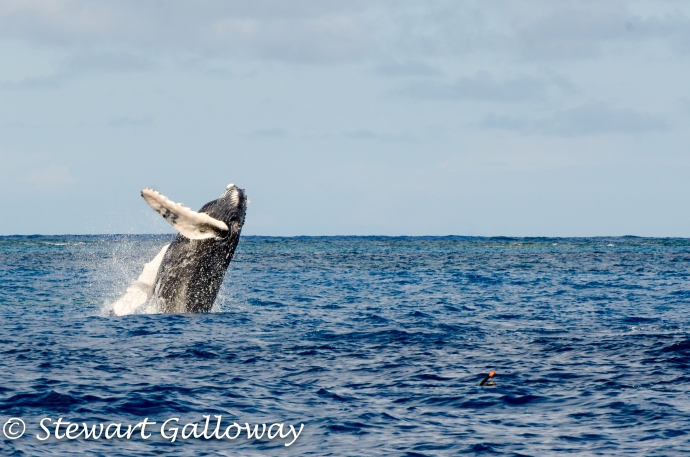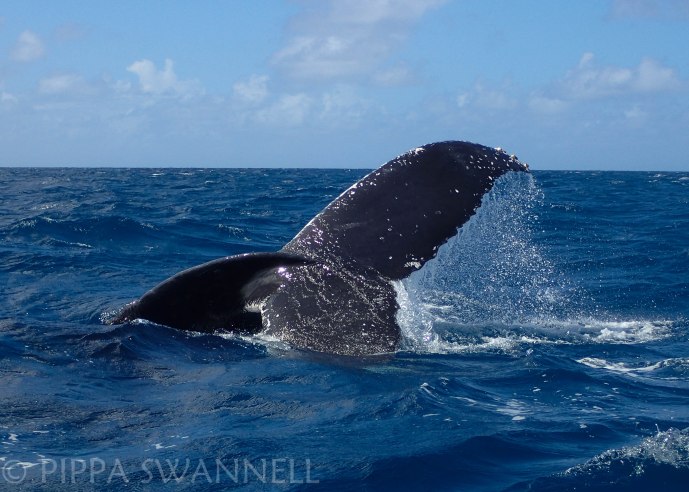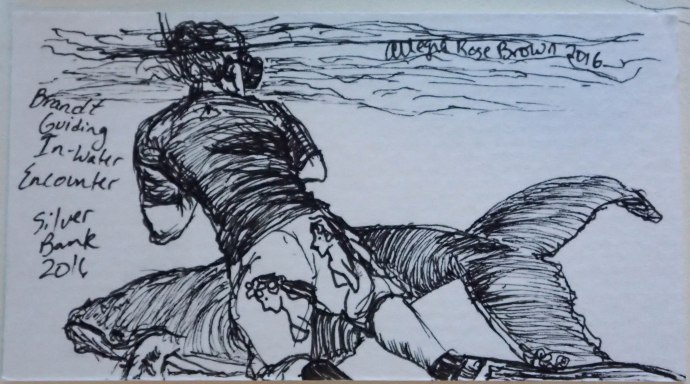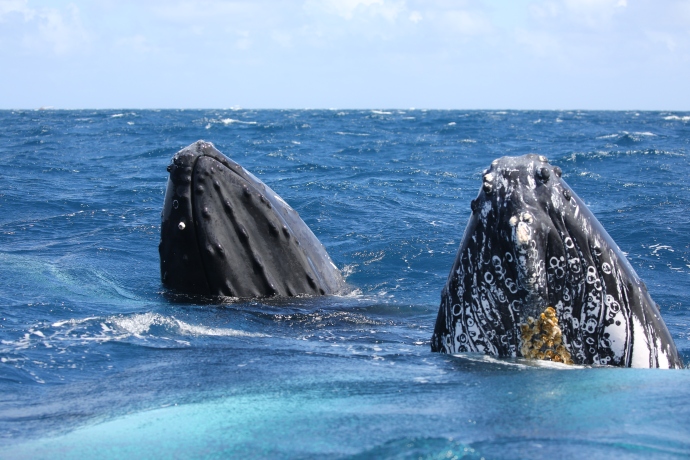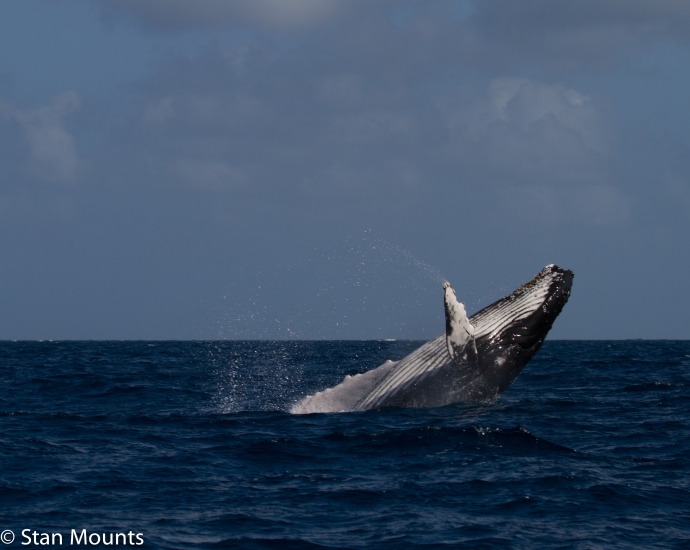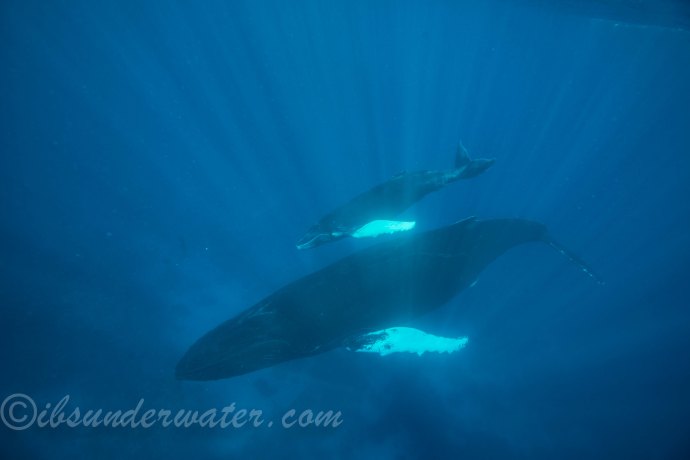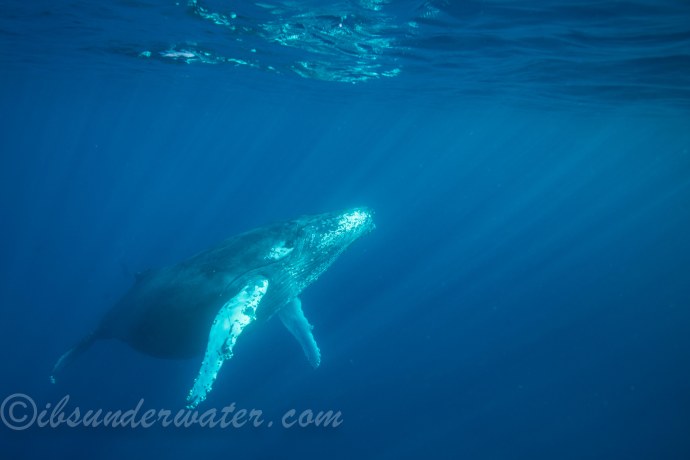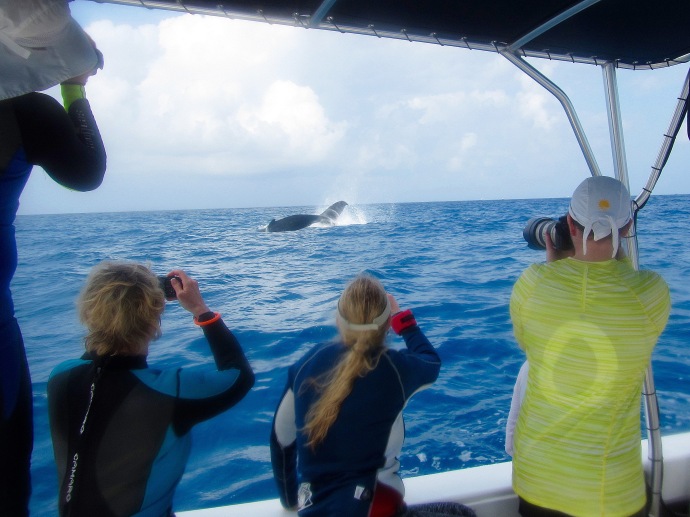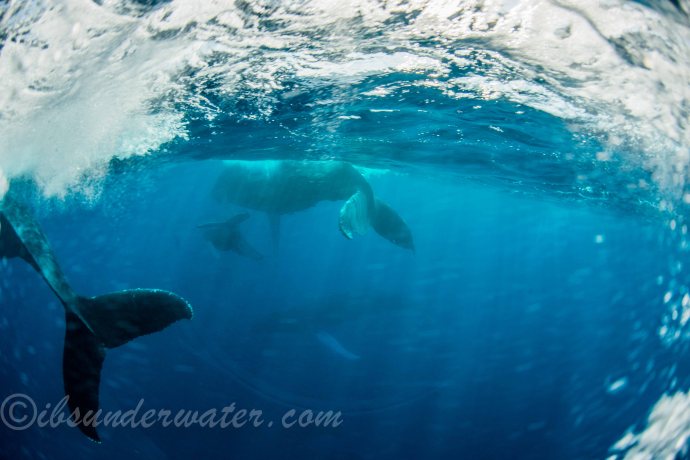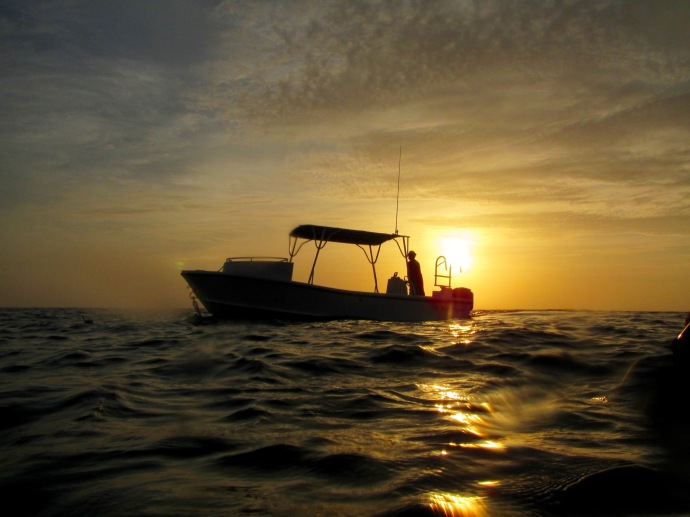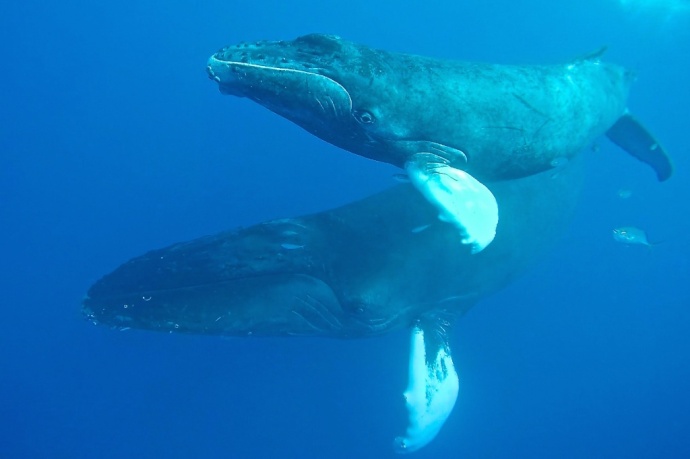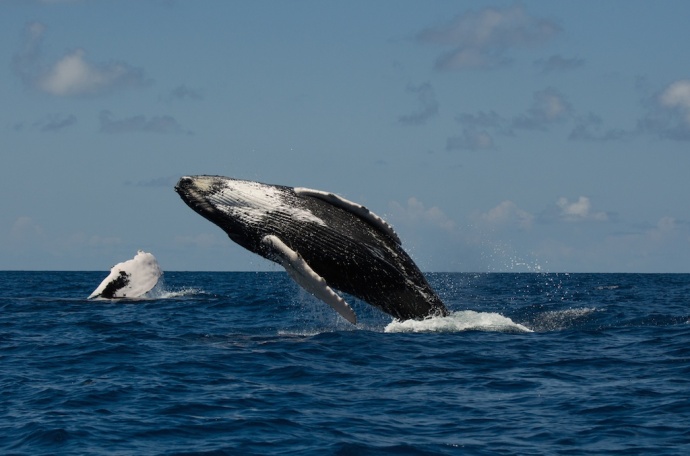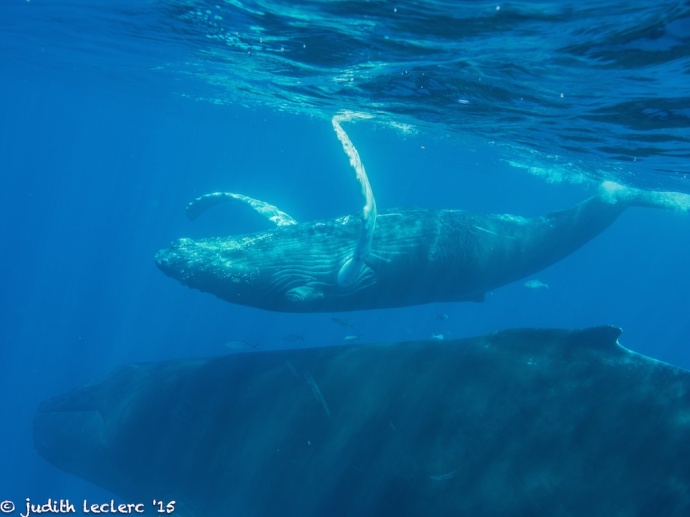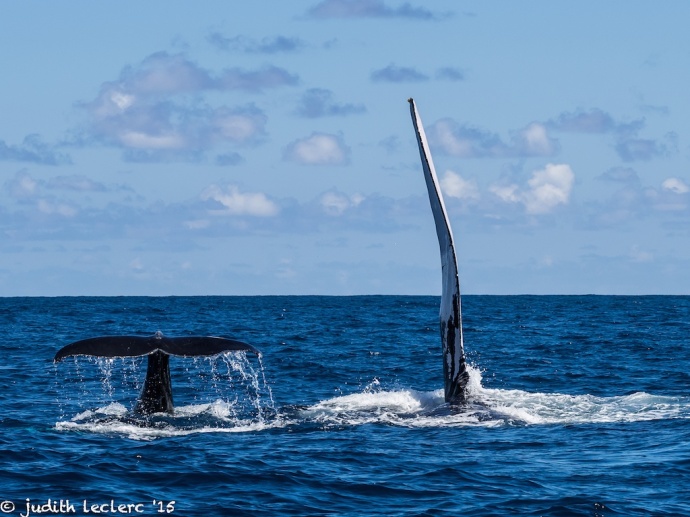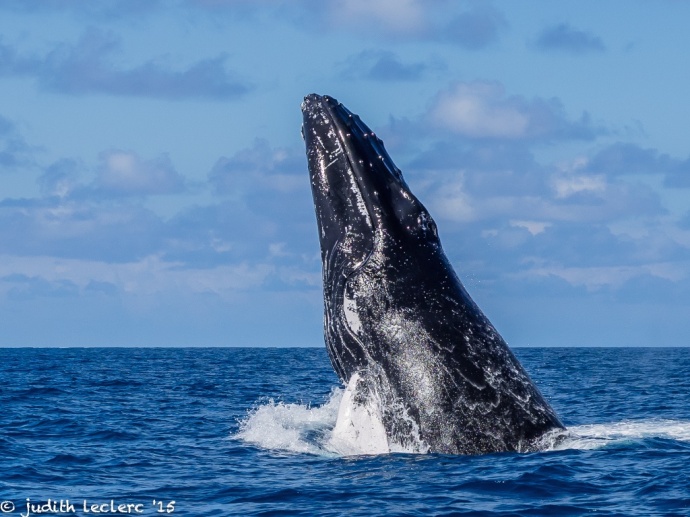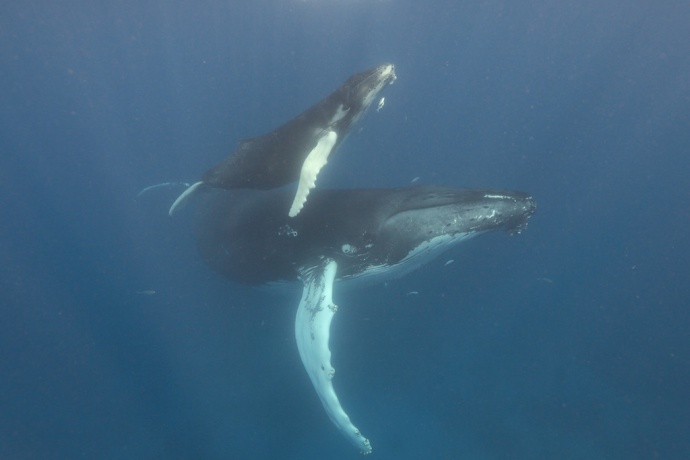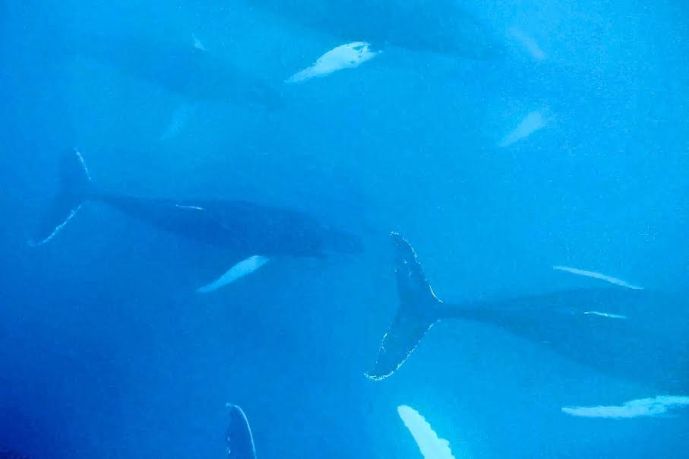March 26 ~ April 2, 2016
Week Ten of our 26th Season
Our penultimate week on the Silver Bank and the whale action has by no means slowed down. Although some of the Humpbacks that migrate here every year will have already begun their long journey back up north to the feeding grounds, many are still here enjoying the Caribbean sunshine for another couple of weeks; mothers taking the opportunity to strengthen their growing calves for a little longer and males cruising the calm waters looking for that last chance to mate!
Once again we encountered rowdy groups of adult males in pursuit of that premium position next to a female in estrus in the hope of mating and lots of top side activity from mothers and calves as the youngsters practice the breaches and fin slaps that Humpback whales are famous for. But the most memorable and unique encounters this week for our lucky guests and what makes the Silver Bank such a special place for whale watching must surely be the in-water experiences with whales. Once again for the third week in a row we were extremely fortunate to be able to locate a singing whale and get in the water for a live performance! Even if you have heard a recording of the famous Humpback song, it just cannot compare to the sensation of being forty feet over the head of a whale and feeling the vibration of the majestic beast’s song as it rings out for miles over the Silver Bank.
Early on in the week we found a cooperative mother and calf pair that allowed us to have a soft-in-water encounter with them. On both occasions the mother appeared to be so comfortable with our tenders that she would intentionally stay close to the small boats and allow her calf to rise gently to the surface to breathe only a few meters from our excited guests, patiently waiting at the surface, cameras in hand. The calf would come to the surface every three or four minutes while the mother rested below and when she came up she would move on a few body lengths before settling down again at about fifty feet. In this way we were able to have the rare and treasured experience of sharing in the intimate bond between a mother whale and her calf while they rest in preparation for their 3000 mile migration north.
On the last day of this week’s charter the winds picked up and we braved choppy seas in search of one more special encounter, and we were not disappointed. We were rewarded with an unforgettable experience, another fantastic mother and calf encounter this time with a male escort in tow. Apparently unimpressed by the efforts of the escort to prove his desirability as a suitable mate, the mother, who appeared only focused on raising her baby, stayed with our tender and snorkelers for a short while before moving and leaving the escort to his striking display of lob tailing around our tender of stunned guests. Not only did we get to see the whales in the water but also enjoyed spectacular surface activity from the escort.
Amongst all this Humpback action we again had the opportunity, for the second week in a row, to swim with Atlantic spotted dolphins. This time the pod was even bigger, at around thirty individuals clicking and buzzing all around us. Being in the water with these playful creatures is such a different experience than the tranquility and peacefulness of being in the water with the whales and it really does top off an already fantastic week!
The Aquatic Adventures team hopes that you are as inspired as we are to help sustain the humpback whale population. Through our partnership with the Center for Coastal Studies, we are helping to gain critical information on these charismatic creatures, and to seek ways to protect and preserve them. To find out more about this effort, join their mailing list or to make a donation, large or small, please visit:
www.coastalstudies.org/aquaticadventures
LIKE us on Facebook
FOLLOW us on Twitter
Learn more about Aquatic Adventures here.
Written by: Pippa Swannell, Aquatic Adventures
Designed by: Heather Reser, Aquatic Adventures






















